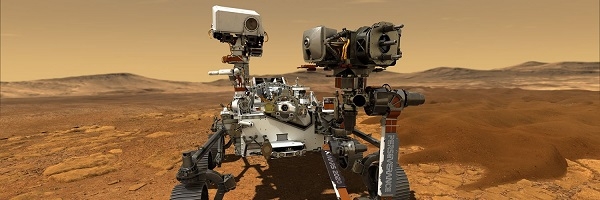NASA launches Perseverance rover towards Martian To Search For Signs Of Ancient Life
Total Views |
Florida, July 31: Creating yet another history NASA successfully launched its most ambitious mission Mars Perseverance rover, on Thursday morning from Cape Canaveral, Florida, after a gap around nine long years. The rover will be the first mission ever to search for signs of ancient life and collect samples to send back to Earth.

Humanity's most sophisticated rover was launched with the Ingenuity Mars Helicopter at 7:50 a.m. EDT (4:50 a.m. PDT) Thursday on a United Launch Alliance (ULA) Atlas V rocket from Space Launch Complex 41 at Cape Canaveral Air Force Station in Florida. This would bring scientists one step closer to send people on the Red planet.
"With the launch of Perseverance, we begin another historic mission of exploration. This amazing explorer's journey has already required the very best from all of us to get it to launch through these challenging times. Now we can look forward to its incredible science and to bringing samples of Mars home even as we advance human missions to the Red Planet. As a mission, as an agency, and as a country, we will persevere," said NASA Administrator Jim Bridenstine.
The Perseverance rover follows NASA’s previous Mars rovers Sojourner, which landed on Mars in 1997, Spirit and Opportunity, which landed in 2004, and Curiosity, which landed on Mars in 2012 and is still operating on the planet.
It is slated to land at the Jezero Crater on martian on February 18 in 2021. It is an aspecific spot known as the Mars' Jezero Crater which is believed to be an ancient dried lake. The rover will also test out other technologies for future exploration on the planet, including releasing a mini-helicopter that would mark the first instance of powered flight on another planet. The rover will at least one Mars year (two Earth years) exploring the planet. Perseverance will test whether astronauts could produce oxygen from the red planet’s atmosphere.
The six-wheel rover is also carrying a small helicopter, dubbed Ingenuity, to perform experimental test flights in Mars' thin atmosphere, which, if successful, would mark a milestone in powered flight. The rover will use the robotic scientist, which weighs over 1,043 kilograms, to collect and store Martian rock and soil samples that could be returned to Earth by future Mars sample return missions.
The rover is equipped with 23 cameras, as well as two microphones which not only reveal the winds and other sounds of Mars for the first time but also to listen for engineering problems in the motors or wheels.The launch follows the United Arab Emirates’ Mars Hope orbiter, which took off on 20 July, and China’s Tianwen-1 rover, which launched three days after that.